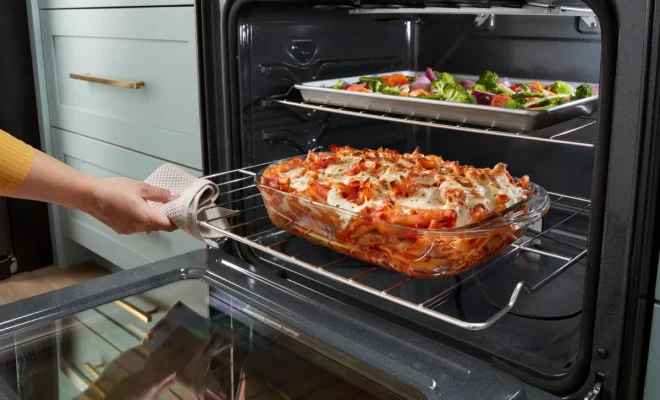Understanding Your Oven Settings: A Comprehensive Guide

Have you ever stared at your oven’s control knobs or touchscreen and wondered what all those settings mean? It can be daunting at first, but fear not! We’re here to provide a comprehensive guide to understanding each oven setting, so you can confidently master cooking and baking like a pro.
1. Conventional Cooking (Bake)
This is your standard oven setting for baking and roasting. When using this function, heat travels from the top and bottom elements, creating an even temperature throughout the oven for a perfect meal every time.
2. Broil
The broil setting is ideal for cooking thin cuts of meat and fish. It uses direct heat from the upper element to sear and brown the food quickly. Be sure to keep an eye on your dishes when using this setting to avoid burning.
3. Defrost
Need to thaw out some frozen food items quickly? The defrost setting comes to the rescue by circulating room temperature air throughout the oven, allowing you to gently thaw your food without cooking it.
4. Convection Bake (Fan-assisted/fan-forced)
For faster, more even cooking results, the convection bake setting uses a fan to circulate hot air around the entire oven cavity while providing constant heat from both top and bottom elements. This allows you to cook multiple trays of food evenly at once without having to rotate them.
5. Convection Roast
Similar to convection bake, this setting employs both top and bottom heating elements in addition to a fan for evenly distributed heat. However, convection roast produces a more direct heat source suitable for roasting meats while retaining their moisture content.
6. Proof
Bread bakers rejoice! The proof setting provides a warm environment in which yeast dough can rise prior to baking. This delicate function ensures optimal conditions for yeast fermentation without overheating or drying out your dough.
7. Dehydrate
Did you know that some ovens have the ability to dry out food for preservation purposes? The dehydrate setting uses low heat and a fan to gradually remove moisture from fruits, vegetables, and herbs — perfect for creating homemade snacks and seasonings.
8. Slow Cook
For those who enjoy tender, fall-off-the-bone dishes, the slow cook setting mimics the process of cooking food at a low temperature for an extended period (similar to a slow cooker). This gentle method allows the flavors to meld while transforming tougher cuts of meat into succulent, melt-in-your-mouth delights.
9. Keep Warm
Need to keep your food warm until serving time? This setting maintains a low temperature in the oven so your cooked meal stays ready to serve without overcooking or drying out.
Now that you’re equipped with the knowledge of each oven setting, it’s time to put that understanding into practice! Conquer every culinary challenge with confidence and master your oven like never before.






